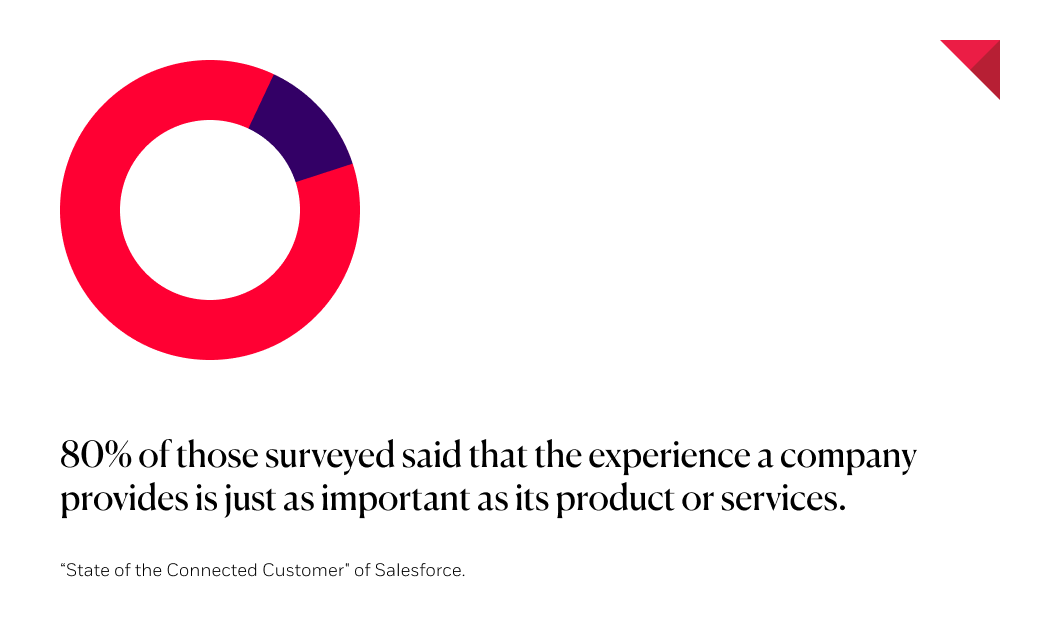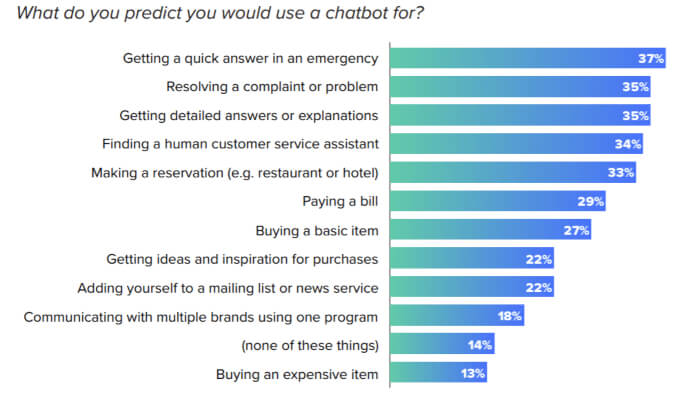Customer experience: how to strengthen it in the digital client era
The customer experience can be identified and defined through the demand of new consumers who always need to find new experiences in the buying process.
This means that the union of marketing + technology has become fundamental in offering a complete experience and, above all, just one channel in a time in which the brand-client interactions are mainly digital. It’s a trend that seems like it's here to stay.
Industries must ensure their technology is updated, given that it's a fundamental point when it comes to creating a competitive advantage. It’s not just about selling, but also about trusting, thanks to providing an added value through how we communicate with our customers, respond to their questions, and handle each point of contact.
Customer experience in the digital transformation: why it is fundamental
With the acceleration of digital transformation, digital interactions have to be more carefully designed than ever before. According to the “state of the connected client” of Salesforce, 80% of those surveyed said that the experience a company provides is just as important as its product or services. This study also revealed that 88% of clients hope that companies accelerate their digital initiatives due to COVID-19.

We can’t lose sight of the digital experience of users and clients if we want to achieve success in our 360º strategy, which allows us to plan a marketing strategy in which we keep all the different digital channels in mind to create a complete and optimized customer experience based on the touchpoints of our buyer personas.
We’re talking about different factors that provide information and value about the brand in question, and at the end convey a perception to the user that is positive (which increases the possibility of client loyalty and recommending the product or service) or negative (increasing the possibility of losing this client). And as it is well-known in marketing, it’s 10 times harder to acquire a new client than maintain one we already have.
Because of this, it’s key to create a connection between the different actions and planned strategies, prioritizing more than ever the one channel of the brand in all digital interactions. This is a crucial point for both companies with a B2C model as companies with a B2B model because the personalization of the messages plays a fundamental role.
Next, we’ll tell you the different factors that you must keep in mind when creating 360º experiences for the user:
3 key factors to creating satisfactory user experiences
-
Create positive experiences
When creating satisfactory user experiences, we have to find those “true moments” when the user needs us and then create mechanisms and processes that ensure that in said situations, the experience delivered by the company is actually distinct from other companies.
We are referring to moments that are decisive in the interaction with the brand and that need personalized attention and carefully crafted messages, which could be: a reminder of an abandoned cart, the message that appears when a transaction is completed, or when the user has a question.

To achieve this, it’s important to first analyze these points to create a 360º strategy centered on the customer experience:
-
Work on the design of the experiences by observing the behavior of the competition and best practices in other sectors that, although they aren’t directly linked with your company, can influence what our client expects.
-
Thoroughly analyze our buyer persona: how they search for products or services similar to those of our company, what channels they use, and what kind of language we have to implement to attract them and ensure they are loyal to us.
-
For a correct analysis of all the factors that make up the digital user experience, it’s important to run an audit prior to beginning that allows us to have a more global vision of the strong points we already have and what we can improve upon.
Next, we’ll outline in more detail how to take care of the different touchpoints to construct the complete digital customer experience:
-
Take care of your digital channels
Today, your digital channels are the new cover letter for companies and say a lot about the values, characteristics, and benefits of the brands.
That’s why we must keep the following aspects in mind:
-
Webpage: has clear and structured information, is mobile-friendly, and that focuses on usability. The image also has to work well with the brand and visually display all elements that we want to highlight, for example: certifications, success stories, and characteristics of products or services so the user can quickly identify them.
-
Social networks: in agreement with what we said earlier about the webpage, social networks are also a channel that we can’t forget about. In addition, keeping in mind that it’s a channel where the user is increasingly in contact with the brand, offering easy and personalized attention and support is key.
-
Chatbots and touchpoints: the goal is to offer clients comfortable and efficient alternatives to get in touch with us and provide information that can be useful. Another way to achieve this goal is to add a FAQ section with questions that have been useful to other users.

Source: Drift
Taking care of these three points will allow us to offer a unified brand experience that conveys loyalty and favors communication with clients.
As we mentioned earlier, it’s very important to analyze beforehand which are the main channels for our potential client, establishing an order of relevance when optimizing the digital interaction. For example, depending on if it’s a B2C or B2B company, the way the buyer persona looks for information, contacts us, and the networks they use for it will vary. Their needs are also different.
In the case of B2B, we have to keep in mind that as they are more premeditated and heavier purchases, the personalization of the customer experience is what makes a difference. That’s why displaying proximity to professionals and providing customized technical support are the two key factors for conversion and loyalty.
-
Marketing and technology: the winning bet to provide value
In the previous point, we focused on taking care of digital marketing and communication with the user through the channels to favor the customer experience and maintain a “clean” image, but we must add the technology part to truly achieve a satisfactory experience.
That means if the user goes to buy our product or service or get in touch with us because of a concern or incident and we don’t respond how the user would like, even if our online brand image is spotless, it doesn’t do us any good. In fact, these events tend to increase the frustration of the client and make their perception of the brand negative which, as we mentioned earlier, makes everything we previously did for the user useless. That’s why:
-
We must provide the user with touchpoints that work well and are effective
-
Personalizing communications based on the previous actions that have been completed is key. Use a CRM and thanks to tools like Journey Builder, it’s much more comfortable and personalized.
-
Analyze and improve tracking to optimize the contact center resources. This point is fundamental to improving the productivity of teams and better handling each interaction.

More people than ever before are opting for technology that favors the customer experience in contact centers and voice channels with solutions like Service Cloud Voice or Genesys Cloud. This kind of solution doesn’t just provide value to the user, but also allows for the optimization of the agent experience and centers on priorities, qualifying and strengthening the resources to achieve better results.
Tracking each of these interactions is what will allow us to mark the difference and consequences of the goals of the sales and marketing departments. It’s important to collect the information from each contact and create actions and solutions adapted to their needs. That’s why having specific solutions to centralize information allows us to interpret the information, analyze the results, and propose improvements. Using tools like Mulesoft and Tableau is key to improving the analysis.
To sum it up, the user experience isn’t centered on just one factor, but instead on all the information we give the client beginning at the first impression and lasting throughout the different touchpoints that they have with the brand. Carefully maintain each of them and support technology to make the most out of them!
Subscribe to our newsletter and stay up to date with the latest digital trends.
Subscribe to our newsletter and stay up to date with the latest digital trends.
No thanks. My inbox is fine as it is.